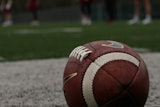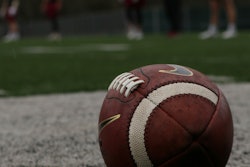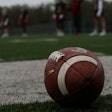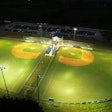Recently, we at AB Today spotted headlines of misguided individuals attempting to dry their baseball diamonds via an unusual and unwise method: gas fires.
First there was the Utah coach who doused his ball field in gasoline, causing the school district to close the facility while it underwent mitigation and cleanup efforts.
Then, there was the Connecticut ball field that faced the same fate, while spectators looked on.
This bizarre trend got our editorial staff thinking — has this sort of thing happened before? And it turns out, indeed it has.
Despite the seemingly obvious fact that using gasoline to dry your ball field is an incredibly bad idea, the fact that people persist in attempting it means that there’s some gap in education when it comes to proper field drying techniques.
We spoke to Jody Gill, a Certified Sports Field Manager (CSFM) and the president of the Sports Turf Managers Association, to learn about alternative field drying techniques facility managers should try — and why they should always leave the gas can in the shed.
What follows is a lightly-edited Q&A with Gill:
AB: What’s your overall reaction to these stories of people lighting their fields on fire?
Gill: Obviously, this is not the recommended way to dry an infield — or to dry anything for that matter. It's extremely dangerous. I'm just glad no one was injured, as far as we know.
There are so many accepted ways to dry infields, which include the use of calcined clays, of which there are many different brands that are used to really just spread on the surface and lightly rake it in, and they do an outstanding job of absorbing moisture from the soil to make the field playable.
My guess is that would be a much cheaper alternative, too, considering the price of gasoline and diesel fuel — and much safer, without a doubt.
AB: Apart from the dangers of lighting a fire, you’re also putting a hazardous substance on the field. Can you tell us a bit about why that might be dangerous?
Gill: I'm not an expert in the area of dealing with hazardous waste, but that's certainly what they were creating. Oil and fuel is something that will stay in the soil for a very long time, I know at least that much, and even as it's burned away there's still going to be some residue in that soil. Those oily residues can also move in the soil, so when it rains on that area, even if they didn't apply gasoline to the grass area, water will move the residues into those grass areas and eventually kill the grass, and very likely just sterilize that soil.
I don't know how long it could stay in the soil, but I imagine it could be a very long time if it's not removed and dealt with as a hazardous waste.
AB: How might cleanup or mitigation efforts be handled after something like this?
Gill: Well, I've never lit a field on fire — but I can imagine that what's required is you're going to have to bring in a loader to excavate that soil, and I'm guessing here, but at least 6 to 8 inches from where they can find soil, and dispose of that. Soil that's been soaked in any kind of a fuel or oil is not something you can easily dispose of, I would think it could be easily considered a hazardous waste, which obviously drives the cost of disposal up right away.
You could equate it to removing a fuel tank that's been buried at an old gas station site for a very long time. The EPA looks at those as hazardous sites, and they do a lot of testing to verify that the fuel has not leaked out of those tanks and if they have they have to excavate beyond any reading of oil in the soil. And I don't know exactly how far, but they have to excavate beyond — they've got to remove all evidence of that fuel or oil that might be in the soil.
AB: How might the notion of using gasoline and fires to dry a field have gotten into people’s heads?
Gill: I would find it hard to believe that any qualified facility manager would ever do something like that, or would ever condone doing something like that — so that's why I'm guessing it was maybe a volunteer or someone who really just doesn't know any better. They probably should've asked the question in advance, 'Is this a good idea?' Most reasonable people would say 'No, that's not a good idea.'
AB: What are some other methods folks could use to dry a field?
Gill: There are what's called puddle pillows, there are absorbents that can be used to absorb water. We've used, in some cases, a tennis court squeegee, where we have just the right amount of moisture on the surface just to roll that across the surface. Really anything that will absorb water, or if you've got an area that's standing in water, use a pump to pump that water away. There are multiple ways to deal with water.
Now, I will say that the best way really is to prevent standing water. And that's really done by having a qualified sports turf manager, number one, but someone who can maintain the grade. Skinned infields are typically graded to about a half-percent slope, that allows water to surface drain off of the field, and that's not so much of a slope that it affects say, a bunted ball for example. As long as you're maintaining that grade and preventing any standing water by filling low spots and maintaining the infield, it should never be an issue in the first place.





































